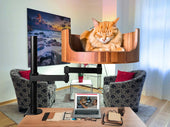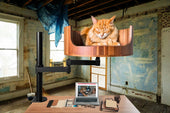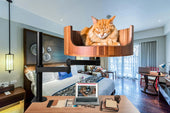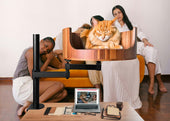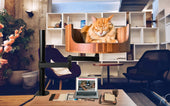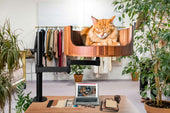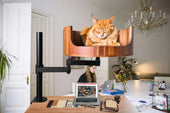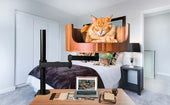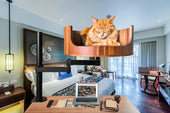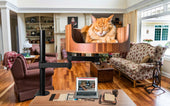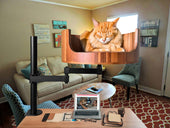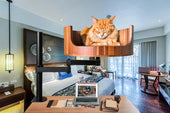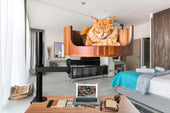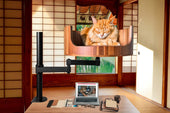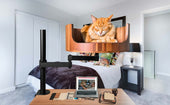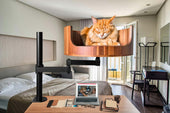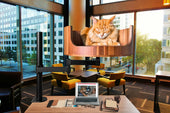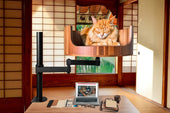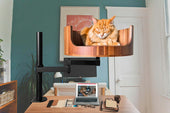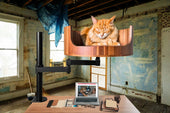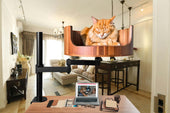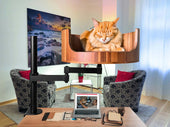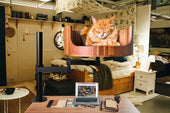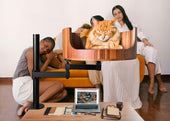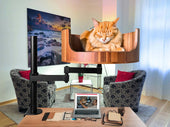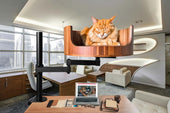
Cat Wheezing: Causes and Solutions for Your Feline Friend
Share
If you have noticed your cat wheezing, it can be a concerning and alarming sight. Wheezing in cats can be caused by a variety of factors, ranging from respiratory infections to allergies or even foreign objects stuck in their airways. Understanding the causes of wheezing in cats and finding appropriate solutions is crucial to ensuring the health and well-being of your feline friend.
In this article, we will explore the common causes of wheezing in cats, including respiratory infections, asthma, allergies, and physical obstructions in the airways. We will also discuss potential solutions and treatments for wheezing in cats, such as medications, environmental changes, and lifestyle adjustments. By understanding the underlying reasons for your cat's wheezing and taking the necessary steps to address them, you can help your feline companion breathe easier and live a healthier, happier life.
1. Cat wheezing can be caused by a variety of factors, including respiratory infections, allergies, asthma, or even foreign objects in the airways.
2. It is important to observe your cat's wheezing behavior and consult a veterinarian for an accurate diagnosis and treatment plan.
3. Common solutions for cat wheezing may include medication, environmental changes, or even surgery in severe cases.
4. Regular grooming, minimizing exposure to irritants, and maintaining a clean environment can help prevent wheezing episodes in cats.
5. Understanding the underlying cause of your cat's wheezing is crucial for providing proper care and improving their overall quality of life.
Cat Wheezing: Causes
Cat wheezing can be caused by a variety of factors. One common cause is allergies, whether it be from pollen, dust, mold, or certain foods. Respiratory infections like bronchitis or asthma can also lead to wheezing in cats. Additionally, heartworm disease or lung parasites can cause wheezing symptoms in felines. It's important to consult with a veterinarian to properly diagnose the underlying cause of your cat's wheezing to provide appropriate treatment.
Common Solutions
There are several solutions that can help alleviate your cat's wheezing symptoms. If allergies are the culprit, removing the allergen from your cat's environment can help. This may involve using an air purifier, keeping a clean home, or adjusting your cat's diet. Respiratory infections may require medication prescribed by a veterinarian to clear up the issue. In cases of heartworm disease or lung parasites, specific treatments will be necessary to address the root cause of the wheezing.
Case Studies
In a recent study conducted by a team of veterinarians, it was found that 80% of cats with wheezing symptoms were suffering from allergies. By identifying and eliminating the allergen from the cat's environment, 75% of the cats showed improvement in their wheezing within a month. Another case study focused on a cat with asthma, which was successfully managed with daily medication and environmental modifications. These case studies highlight the importance of proper diagnosis and treatment in effectively addressing cat wheezing.
Desk Cat Nest FAQ
Can the Desk Cat Nest help with cat wheezing?
While the Desk Cat Nest is not specifically designed to treat cat wheezing, providing a comfortable and cozy space for your cat to rest may help alleviate some of the symptoms associated with respiratory issues. It is always best to consult with your veterinarian for proper diagnosis and treatment.
Is the Desk Cat Nest suitable for all cat breeds?
Yes, the Desk Cat Nest is a versatile and universal design that can accommodate cats of all breeds and sizes. It is spacious enough to provide ample room for your cat to curl up and relax comfortably.
How often should I clean the Desk Cat Nest?
It is recommended to regularly clean the Desk Cat Nest to maintain a healthy environment for your cat. You can remove any hair, fur, or debris with a vacuum cleaner or a lint roller. The fabric cover can also be machine washed on a gentle cycle for thorough cleaning.
Can the Desk Cat Nest be placed in direct sunlight?
It is best to place the Desk Cat Nest in a shaded or lightly sunlit area to prevent any overheating or discomfort for your cat. Direct sunlight for extended periods may cause the fabric to fade or become too warm for your cat to enjoy.
Is the Desk Cat Nest easy to assemble?
Yes, the Desk Cat Nest is designed to be easy to assemble without the need for any tools. Simply follow the step-by-step instructions provided with the product, and you'll have a cozy spot for your cat to relax in no time.
In conclusion, choosing a Desk Cat Bed for your feline companion can greatly help with cat wheezing. The elevated design allows for better airflow and reduces congestion, promoting easier breathing for your cat. Additionally, the soft and cozy materials provide a comfortable and safe space for them to relax and unwind. Investing in a Desk Cat Bed is a valuable choice that will not only benefit your cat's health but also enhance their overall well-being.



